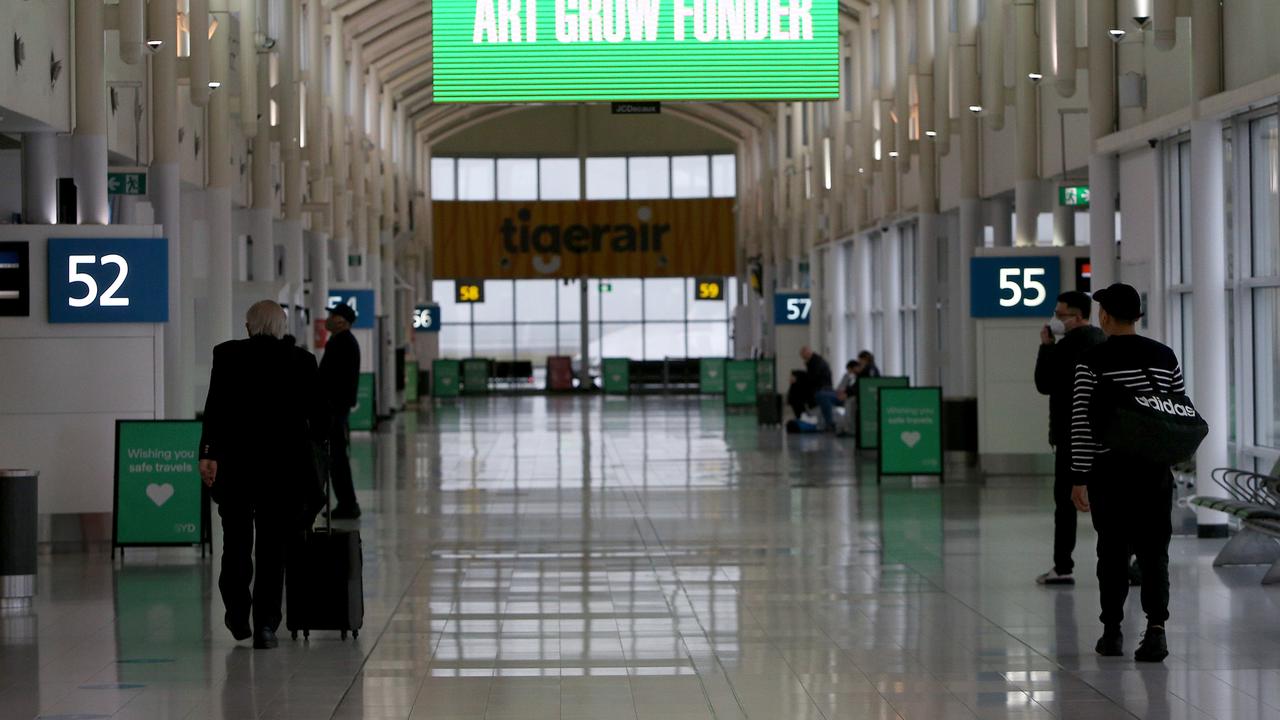Citizen Kane’s $3bn Trump punt
BORAL has unveiled a very old-fashioned roll-up-your-sleeves move in the “real reality” space of building products and construction, writes Terry McCrann.

Terry McCrann
Don't miss out on the headlines from Terry McCrann. Followed categories will be added to My News.
IN the age of Google, Facebook and Apple, of all-too virtual reality and more and more business in “the cloud”, Boral has unveiled a very old-fashioned roll-up-your-sleeves move in the “real reality” space of building products and construction.
Its “done deal” to buy the all-American Headwaters Inc is also without the slightest qualification, one way or the other, a company-making move: the Boral after Headwaters becomes a very different company with a very different future.
Although conceived well before Donald Trump was a serious contender to even become the contender; and planned and negotiated when he “had no hope” of progressing beyond that status; in execution it has become a $3.5 billion punt on his presidency.
It’s a punt both in the small. Boral is going dramatically deeper into the US housing and construction cycles precisely when the new president is committed — at least on paper — to a $1 trillion-plus infrastructure spend.
And it’s a punt in the big. Boral has now put all its investment dollars and then some into the US’s future more broadly. That commitment goes well beyond the Trump presidency, whether it turns out to be four years or even eight.
Yes, Australia will still generate more than 50 per cent of group revenue, even into the medium term, but the US’s future is now Boral’s future.
That’s where the growth will be, that’s where the growth has to be, and where Boral has to find sufficient synergy paybacks and generate sufficient profits in a tough, competitive market.
The two companies make an excellent fit. Or rather, Headwaters makes an exceptional quantum addition of scale, not just to Boral in the US — tripling its business and its footprint, but indeed to the entire Boral group.
While it doesn’t come cheap, it’s actually not that expensive when you allow for that exceptional opportunity it provides.
Boral has had to increase its shares on issue by 58 per cent. For that it gets to increase its group revenue, in year one, by less than 40 per cent; but its operating profit by a more attractive 45 per cent.
Those raw numbers understate the attractiveness of the operations that Headwaters brings to Boral.
Two thirds of its revenues are in building products; the remainder is fly-ash, with Headwaters one of the major suppliers into the US construction materials market.
The two companies knit very well in product aggregation, product diversification and the geographic mix — strengthening Boral’s position in some places, while broadening it into new markets.
Before the deal, Boral generated 67 per cent of its revenue in Australia and just 19 per cent in the US; after the deal Australia drops to 51 per cent and the US doubles to 38 per cent.
The rest of the revenue, balancing out Boral’s combination of established market strength and growth dynamics, comes from its USG Boral joint venture to manufacture and distribute plasterboard in Australia and Asia.
Boral says the acquisition will be EPS-positive from year one.
It’s being funded roughly 60 per cent equity and 40 per cent debt and cash.
In a perfect world, the equity would all have been raised by the renounceable pro-rata issue to shareholders, big and small — instead of $1.6 billion coming from the pro-rata issue and $450 million from an upfront placement to institutional investors.
Both the issue and the placement are at $4.80 compared with Friday’s market close of $6.15 and the $5.65 theoretical ex-rights, ex-placement price for Boral shares.
So instos subscribing for the placement pick up a — theoretical — 85c free gift. But they pay for it, as shareholders in the slightly lower ex-rights price as a consequence of the placement.
BUT we don’t live in a perfect world. The — relatively small (about 8c a share) — dilution that retail investors suffer because of the below-market placement price is reasonably rationalised on the basis of upfront funding certainty.
By tonight, Boral will have close enough to $1.5 billion of the $2 billion of equity funding “in the bank”.
It has to wait for the rest from retail holders. This will assuredly mean, though, a higher ex-issue share price in practise than would have been the case if it were waiting for more from retail holders.
One way to look at the placement is that while retail holders are being offered one share at the discounted $4.80 for every 2.22 shares they own — and, unlike the instos, also been given the luxury of seeing both how the instos and the broader market react to the whole deal, plus what happens to the broader share market — the instos get to buy more like 1.5 shares at the lower price.
But they have to make their decision before knowing how the broader market is going to assess what is a very big punt by Boral.
On that “punt”, history is not all that kind to Australians companies that have gone big in overseas markets, even the US. But there’s a lot of Boral’s CEO, American Mike Kane, in this; and that’s a big positive.
MORRISON’S BIZARRE BUDGET RACE
TREASURER Scott Morrison — and indeed, the rest of us, as passengers on the Good Ship Australia — is in a rather bizarre race between slow wages growth and rising prices for coal and iron ore.
Wages — correction, most wages — are now growing at their slowest pace, by less than 2 per cent a year, in more than half a century.
Whether that’s a good or bad thing — for you and for the economy — is debatable and in truth rather complicated: it’s both.
But it is a bad thing for Morrison’s Budget: it means revenue will grow less quickly than forecast in May and that means the deficit will be bigger also than forecast.
This also means, not exactly incidentally, that it is equally a good thing for you.
Those higher tax revenues would have been stealing money out of your pocket via bracket creep; albeit even though “creeping” more slowly.
On the other hand, the surge in commodity prices will pour money into the Budget.
The big producers of iron ore and coal pay big lumps of tax in Australia. Almost 30c of every dollar they get in higher prices will flow to Canberra.
If, of course, prices stay high.
So Morrison’s Budget bottom line is not only a race between low wages growth boosting the deficit against high commodity prices cutting it, but a race against time. Those high prices mightn’t last.
The big decision he faces is how to bring these dynamics — and their uncertainties — into his midyear Budget update next month.
Does he go for a net gloomier bottom line, to keep pressure on the Senate to pass Budget cuts?
But at the risk of that triggering the loss of our triple-A credit rating? Or does he aim to keep the rating agencies at bay?
Whatever, it is ultimately a political, not an analytical or even a policy, decision.
But it’s always been the case with these updates since Peter Costello started them in the mid 1990s.
Originally published as Citizen Kane’s $3bn Trump punt


